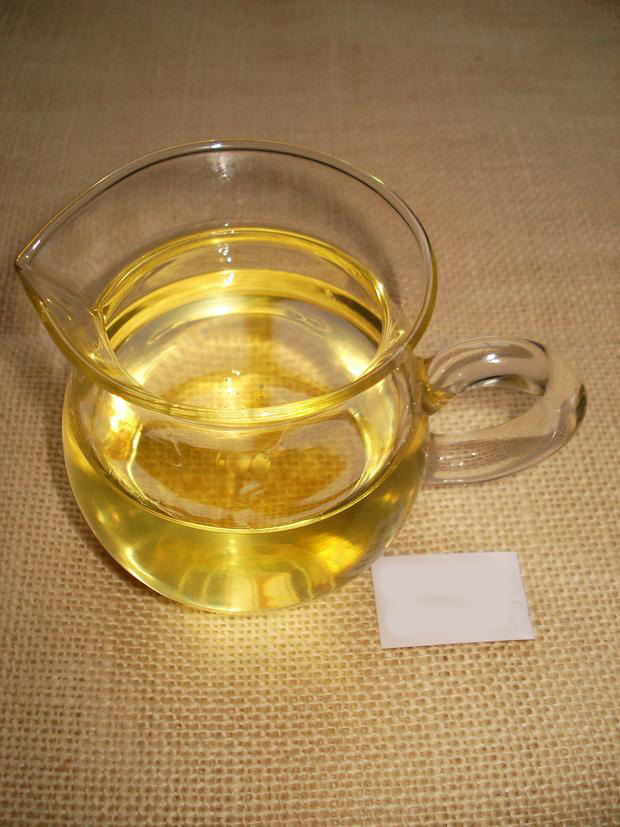The truth about safflower oil
Safflower oil became very popular in our days. Let’s take a closer look on it.
History of Safflower Oil. What is safflower oil
Safflower’s history as a food plant in the western world is very recent; mostly we have grown it as a natural dye. We don’t eat safflower seeds as we do with pother oils sources. The plant is native to India and ancient medical documents from the India warn us against using the plant as a food. Modern plant breeders have developed new forms of safflower with a healthier proportion of monounsaturated to polyunsaturated fatty acids. You can read sign “high oleic safflower oil” on some products. We really recommend you to use an olive oil, which tastes better and has a long tradition of use as a food.
Please, read furthermore and we will tell you why we don’t recommend using this oil as a food.

Benefits of Safflower oil
Let’s talk a little about chemical side of the oils. We have all heard of saturated and unsaturated fats. These terms refer to the chemistry of fatty acids. If you put in refrigerator oil you’ll quickly see the difference. Saturated fats become hard and opaque in the cold. Animal fats are the major source of the saturated fat in our diets. At the other end are polyunsaturated fats which include many vegetable oils.
You should know that safflower oil is the most unsaturated of the food oils. Only, please, keep in mind that all fats are mixtures of fatty acids, so term “saturated” and “unsaturated” refer to the predominant components.
In response to the growing awareness of the harmful effects of animal fat, doctors and nutritionists began recommending fats from vegetable oils, with the result that the food industry began to promote products high in polyunsaturates and safflower oil, once a little-known cooking fat, enjoyed a boom of popularity.
Unfortunately, safflower oil has danger of its own, which is still not widely known. Diets high in safflower oil increase the risk of cancer, speed up aging and degeneration of tissues, and may aggravate inflammatory diseases and immune-system disorders. That is the harmful benefits of safflower oil. Here how it works.
When fats oxidize and the dangerous compounds build up, they become rancid, and we can detect the change by smelling it and we strongly recommend you to train your nose to identify it. Never eat anything that has even hint of that smell. Safflower oil develops a rancid odor much faster than any other oil.
Safflower oil nutrition
Safflower oil nutrition contains:
Linoleic acid- 73-79%;
Oleic acid- 14-21%;
Palmitic acid- 6-7 5;
Stearin acid- 1.5-4%;
Linolenic acid- 0.2%
Vitamin K
Vitamin E
Derivatives of serotonin
Safflower oil has up to 0.7 mg / g of conjugated linoleic acid – this is the largest amount amidst of vegetable oils.
Safflower oil cooking
Safflower oil cooking. If you want to use safflower oil in your cooking you need to know it should be used only as a salad dressing or some other cold food. Remember, heating makes it susceptible to oxidation, with unhealthy results of which we spoke earlier. Even if you buy your cookies, crackers, and chips at the health food stores, you will find most of them cooked with safflower oil. So, you better leave this product alone or learn to make it at home with safer ingredients.
Interesting fact that safflower widely uses in European cooking as a substitute for saffron and for long time was even called so.
Safflower oil weight loss
American scientists had done research and found out that if you take 1 teaspoon of safflower oil once a day for 4 months you may improve the efficiency of so call “good” cholesterol. People who are suffering from obesity and diabetes show better results on blood sugar, insulin sensitivity and reduction of inflammation.
Clinical researches over half a year have shown that daily consumption of safflower oil can reduce abdominal fat and increase muscle tissue. In addition to that, safflower oil controls the symptoms of metabolic syndrome and reduces by 17.5% level of C-reactive protein in the blood which shows the inflammation level in the body. Studies also showed that taking 1 teaspoon of safflower oil daily can reduce the risk of cardio-vascular diseases.
Safflower oil weight loss program should include 1 teaspoon of organic safflower oil once a day. Remember, if you notice any traces of smell in it – through it out and buy a new one. Keep your safflower oil bottle (glass bottle is the best) in a cool dark place with tightly closed cover.
Safflower oil skin
Safflower oil is a good moisturizer and widely used in creams for dry skin and sunscreens in cosmetic. Because of its antioxidant effect it used in anti-aging creams. Safflower oil skin can heal and recover wounds and be used as a treatment for rosacea and other skin reddishness.
It’s also can be used as mask for dry hair because it helps moisturize it and makes hair silky and shiny.

safflower oil weight loss, what is safflower oil
